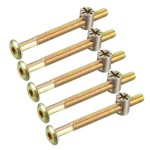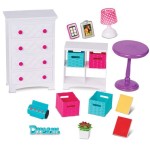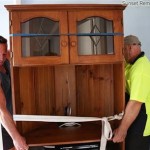Design Ideas For Patio Furniture
Transforming an outdoor space into a functional and aesthetically pleasing patio retreat requires careful consideration of furniture selection and arrangement. The patio, often an extension of the home’s living area, serves as a space for relaxation, entertainment, and connection with nature. Therefore, choosing the right patio furniture is pivotal in creating an inviting and comfortable environment. The key is to balance aesthetic appeal with practicality, ensuring the furniture not only complements the overall architectural style of the home and landscape but also withstands the elements and provides lasting comfort.
Selecting patio furniture involves evaluating several factors, including the intended use of the space, the available square footage, the local climate, and individual style preferences. Before browsing through catalogs or visiting furniture stores, it is beneficial to define the primary purpose of the patio. Will it be utilized for dining, lounging, or a combination of both? Understanding the fundamental function of the space will guide decisions regarding the type, size, and quantity of furniture required. For instance, a patio intended for frequent al fresco dining will necessitate a spacious dining table and comfortable chairs, while a space dedicated to relaxation might benefit more from plush lounge chairs, a sectional sofa, and a coffee table.
Furthermore, the climate in which the patio is situated profoundly influences the choice of materials. In regions characterized by harsh winters or intense sun exposure, furniture crafted from durable, weather-resistant materials such as aluminum, teak, or synthetic wicker proves to be a prudent investment. These materials are less susceptible to damage from moisture, temperature fluctuations, and UV radiation, ensuring longevity and minimizing maintenance requirements. Conversely, in milder climates, a wider variety of materials, including wood and wrought iron, can be considered, offering greater design flexibility.
Beyond functional considerations, the aesthetic appeal of patio furniture plays a vital role in creating a visually harmonious outdoor space. Coordinating the furniture style with the architectural style of the home and the surrounding landscape contributes to a cohesive and aesthetically pleasing look. Whether one favors a modern, minimalist aesthetic or a more traditional, rustic charm, there is a diverse range of patio furniture styles available to suit individual tastes and preferences. Exploring different design options and experimenting with various furniture arrangements can help create a patio that reflects personal style and enhances the overall ambiance of the outdoor living area.
Material Selection: Balancing Aesthetics and Durability
The selection of materials for patio furniture is crucial for ensuring longevity, comfort, and aesthetic appeal. Different materials offer varying degrees of weather resistance, durability, and ease of maintenance. Among the most popular options are aluminum, teak, synthetic wicker, wrought iron, and plastic. Each material possesses unique characteristics that make it suitable for specific climates and design preferences.
Aluminum is a lightweight and exceptionally durable material that is resistant to rust and corrosion. Powder-coated aluminum furniture is particularly well-suited for outdoor use, as the powder coating provides an extra layer of protection against the elements. Aluminum furniture is easy to clean and maintain, making it a practical choice for busy individuals. It is also a versatile material that can be molded into various shapes and styles, ranging from sleek and modern designs to more traditional and ornate pieces. However, aluminum can become very hot in direct sunlight, so it is advisable to use cushions and umbrellas to provide shade and comfort.
Teak is a naturally dense and water-resistant hardwood prized for its beauty and durability. Teak furniture is known for its ability to withstand the elements without warping, cracking, or decaying. Over time, teak will naturally weather to a silvery-gray patina, which many find aesthetically pleasing. However, if one prefers to maintain the original golden-brown color, regular oiling is required. Teak is a sustainable material when sourced from responsibly managed plantations. It is a classic choice for patio furniture, lending a touch of elegance and sophistication to any outdoor space.
Synthetic wicker, also known as resin wicker, is a man-made material designed to mimic the look and feel of natural wicker. However, unlike natural wicker, synthetic wicker is highly resistant to moisture, UV radiation, and mildew. This makes it an ideal choice for outdoor furniture, particularly in humid climates. Synthetic wicker furniture is available in a wide range of colors and styles, allowing one to easily coordinate it with existing decor. It is also lightweight and easy to clean, requiring minimal maintenance. When selecting synthetic wicker furniture, it is important to choose high-quality materials that are UV-resistant and durable.
Wrought iron is a strong and heavy material that is often used for traditional and romantic-style patio furniture. Wrought iron furniture is known for its intricate designs and durability. However, it is prone to rust and corrosion, especially in humid climates. To protect wrought iron furniture from the elements, it is essential to apply a rust-resistant coating and to store it indoors during the winter months. Regular maintenance, such as cleaning and repainting, is also necessary to keep wrought iron furniture looking its best.
Plastic furniture is a budget-friendly option that is lightweight, easy to clean, and resistant to moisture. However, plastic furniture is not as durable as other materials and may fade or crack over time, especially when exposed to direct sunlight. Recycled plastic furniture is a more sustainable option that helps to reduce waste. When selecting plastic furniture, it is important to choose high-quality materials that are UV-resistant and designed for outdoor use.
Optimizing Space: Furniture Arrangement and Flow
Effective furniture arrangement is paramount for creating a functional and inviting patio space. Careful consideration of the available square footage, traffic flow, and intended use of the patio is essential for maximizing comfort and usability. A well-organized patio promotes relaxation, conversation, and seamless movement throughout the space.
Before placing any furniture, it is beneficial to create a scaled plan of the patio, outlining the dimensions and any existing features, such as trees, planters, or architectural elements. This allows one to experiment with different furniture arrangements and visualize the final result. Consider the primary focal point of the patio, such as a fireplace, a view, or a water feature, and arrange the furniture to emphasize this feature.
When arranging patio furniture, it is important to create distinct zones for different activities, such as dining, lounging, and conversation. A dining area should include a table and chairs that are appropriately sized for the number of people who will typically use the space. A lounging area can be defined with comfortable chairs, a sectional sofa, and ottomans. A conversation area can be created with a grouping of chairs arranged around a coffee table or a fire pit. Defining these zones helps to create a sense of order and functionality within the patio space.
Traffic flow is another important consideration when arranging patio furniture. Ensure that there are clear pathways for people to move freely throughout the space without having to navigate around furniture. Avoid placing furniture in areas where it might obstruct access to doors, gates, or other important features. Maintain adequate spacing between furniture pieces to allow for comfortable movement and conversation. A good rule of thumb is to allow at least 3 feet of space between furniture pieces.
Pay attention to the orientation of the furniture in relation to the sun and wind. In hot climates, position seating areas to provide shade during the hottest parts of the day. Use umbrellas, awnings, or pergolas to create shade if necessary. In windy areas, consider using heavier furniture pieces or securing lightweight furniture to prevent it from being blown around. Windbreaks, such as hedges or screens, can also help to reduce wind exposure.
Style and Ambiance: Enhancing the Patio Aesthetic
The aesthetic appeal of patio furniture significantly contributes to the overall ambiance of the outdoor space. Selecting furniture that reflects personal style and complements the architectural style of the home and the surrounding landscape is essential for creating a cohesive and visually pleasing patio. Accessories, such as cushions, throws, rugs, and lighting, can further enhance the aesthetic and create a welcoming and inviting atmosphere.
Explore different patio furniture styles to find one that resonates with individual preferences and complements the existing décor. Modern patio furniture often features clean lines, minimalist designs, and neutral colors. Traditional patio furniture typically incorporates ornate details, classic shapes, and warm, inviting colors. Rustic patio furniture is characterized by natural materials, weathered finishes, and a relaxed, informal aesthetic. Choose a style that reflects personal taste and creates the desired ambiance.
Color plays a crucial role in setting the mood of the patio. Neutral colors, such as beige, gray, and white, create a calming and sophisticated atmosphere. Bright colors, such as red, yellow, and blue, add energy and vibrancy to the space. Consider the color palette of the home and the surrounding landscape when selecting patio furniture colors. Coordinating the furniture colors with the existing décor creates a cohesive and harmonious look.
Accessories are essential for adding personality and comfort to the patio. Cushions and throws provide extra comfort and add pops of color and texture. Outdoor rugs define seating areas and protect feet from hot surfaces. Lighting creates ambiance and extends the usability of the patio into the evening hours. Consider using a combination of ambient lighting, such as string lights or lanterns, and task lighting, such as spotlights or path lights. Plants and flowers add life and beauty to the patio. Choose plants that are well-suited to the local climate and that complement the overall design aesthetic.
The choice of furniture and accessories can transform a patio into a personalized outdoor retreat. By carefully considering material selection, space optimization, and style, it is possible to create a patio that is both functional and aesthetically pleasing, providing a relaxing and inviting space for enjoying the outdoors.
:strip_icc()/SIP935221-980e26a3222d44648562c7d3f398f62e.jpg?strip=all)
16 Patio Furniture Ideas To Make Your Backyard A Destination

26 Best Patio Decorating Ideas Decor On A Budget

Beautiful Patio Ideas And Outdoor Trends For 2024 Jane At Home

Outdoor Furniture Ideas What S Hot This Summer
:strip_icc()/101096268-b255266533dc4f5ea6b4f3cd275b9882.jpg?strip=all)
16 Patio Furniture Ideas To Make Your Backyard A Destination

35 Outdoor Living Patio Furniture Ideas Archid

Best Patio Design Ideas For Your Home Designcafe

Best Patio Design Ideas For Hosting Summer Get Togethers Decorilla Online Interior

10 Patio Furniture Design Ideas Prestige Décor

Patio Design Ideas The Home








